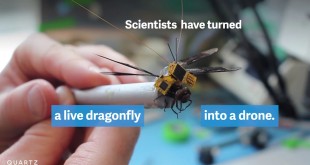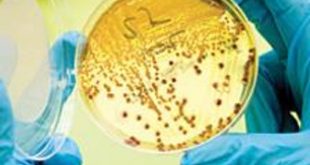The mosquito is the deadliest animal on the planet, responsible for spreading malaria, which kills more than 400,000 people every year. The American Society for Microbiology estimates that there are trillions of microbes living in or on the human body that constitute the human microbiome.
The human skin microbiome (HSM) acts as a barrier between humans and our external environment, protecting us from infection, but also potentially producing molecules that attract mosquitos. Mosquitos are of particular concern to the Department of Defense, as they transmit pathogens that cause diseases such as chikungunya, Zika, dengue, West Nile virus, yellow fever, and malaria.
Mosquitoes transmit pathogens, and other diseases present significant risks to the readiness and resilience of military personnel, and public health more generally. Throughout human history, militaries have struggled with mosquito-borne maladies, from the million-plus cases that waylayed soldiers during the Civil War to the over 80,000 cases among US service members in Vietnam. Even though a vast majority of those survived, the disease disrupted the forces’ ability to fight, at times in critical moments. Army researchers currently estimate malaria infections are responsible for up to 21,000 lost work hours and between $1.2 and $4.4 million per year in evacuation and medical costs.
The treatment for malaria has progressed significantly in recent decades, that slowing the spread of vector-borne disease (e.g., bed nets, chemical repellants, anti-malarial drugs). DARPA launched ReVector program in June 2020 with aim to stop the disease before it can get into the human body at all.
The ReVector program aims to maintain the health of military personnel operating in disease-endemic regions by reducing attraction and feeding by mosquitos, and limiting exposure to mosquito-transmitted diseases. Mosquitoes are attracted to the general area of humans by volatiles emitted in human breath. However, it is the heat and volatile molecules from human skin that direct mosquitoes to the specific sites on the body where they feed. Many of those volatile molecules are produced by the metabolism of organisms in the skin microbiome.
Researchers on the ReVector program are working to develop precise, safe, and efficacious technologies to modulate the profile of skin-associated volatile molecules by changing the organisms that are present in the skin microbiome and/or their metabolic processes.
Current approaches also have logistical burdens or side effects that make them impractical for use during military deployments. For example, the requirements for frequent reapplication of repellants or repeat dosing of drugs often result in inconsistent protection. In contrast, the envisioned ReVector treatments could be applied just hours before a mission with minimal equipment or training, would produce no detectable odor, and would last for up to two weeks without reapplication, offering improved, sustained protection against disease vectors.
Our Body’s Microbiome refers to collection of all the genes of Microbiotas or micro-organisms present inside and outside the body including bacteria, and virus. Synthetic biology can edit human gut microbiome improving digestive health and cognition — two areas crucial to warfighter performance. It can also program it to harm humans.
Synthetic biology It can be defined as an engineering approach to biology. And it aims to re-design of natural biological systems for useful purposes as well as design and construction of new biological parts, devices, and systems. It is also applied in gene editing technology, and CRISPR has become one of the most popular gene-editing tools as it is fast, cheap, and easy to use.
Genome engineering has progressed to the point where editing the HSM to remove the molecules that attract mosquitos or add genes that produce mild mosquito repellants are now possible. While the skin microbiome has naturally evolved to modulate our interactions with the environment and organisms that surround us, exerting precise control over our microbiomes is an exciting new way to provide protection from mosquito-borne diseases.
The ReVector program aims to maintain the health of military personnel operating in disease-endemic regions by reducing attraction and feeding by mosquitoes.
Program
Phase 1 of the ReVector program (18 months) will focus on modifying in vitro microbiomes, Phase 2 (18 months) will focus on modifying microbiomes of animal models, while Phase 3 (12 months) will focus on clinical tests. Final products from the end of each of the three phases will be tested and evaluated by U.S. government laboratories for their ability to repel mosquitos.
The program’s first phase involved the development of technology to “modify human skin microbes” and the “volatile molecules” it produces, and testing the effect of those modifications on mosquitos. “In Phase 2, the team plans to advance testing in animal models and move complex microbiome communities,” ReVector program manager Linda Chrisley said in the release.
The release explained that “ultimately, ReVector seeks to develop topical formulations that could be applied shortly before a mission with minimal equipment or training, and last for at least two weeks without reapplication, offering improved, sustained protection against disease vectors.”
Awards
In order to advance that concept, DARPA has awarded ReVector Phase 1 contracts to two organizations: Stanford University and Ginkgo Bioworks. These performers are tasked with developing precise, safe, and efficacious technologies to modulate the profile of skin-associated volatile molecules by altering the organisms that are present in the skin microbiome and/or their metabolic processes.
“The efforts that were selected have assembled teams with expertise in synthetic biology, human microbiome, and mosquito studies,” noted Dr. Linda Chrisey, ReVector program manager. “The cross-disciplinary make-up of the teams enables the broad knowledge and skill set needed to address ReVector challenges and positions them to create an innovative solution to protect warfighters from mosquitos.”
DARPA is working with Stanford University researchers on the project, and the agency notes the research is reviewed by the US Food and Drug Administration and “if necessary” the Environmental Protection Agency “to ensure that technologies are effective and do not pose a threat to humans or the environment.”
References and Resources also include:
 International Defense Security & Technology Your trusted Source for News, Research and Analysis
International Defense Security & Technology Your trusted Source for News, Research and Analysis

